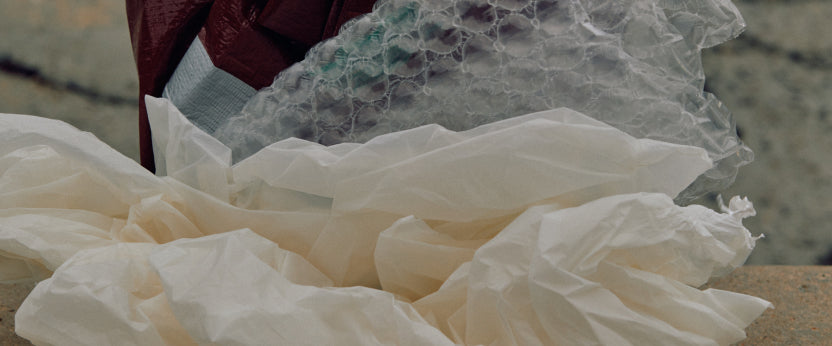
Say goodbye to single-use plastic
It’s no secret that plastic is a serious threat to our planet. As a snapshot, the world produces around 400 million metric tons of plastic waste every year, with 10 million tons ending up in our waterways and oceans. What’s more, producing single-use plastics requires significant amounts of fossil fuels, polluting the atmosphere and accelerating climate change. It’s said that it takes 200 and 500 years respectively for a plastic drinking straw and toothbrush to break down. And ‘break down’ doesn’t mean biodegrade either. Instead, these disposable plastic items break down into microplastic particles that continue to contaminate our environment.
So, what can we do about it?
Know what you’re buying
So many of the challenges our planet is facing stem from consumption. And while unavoidable (we’ll always need shoes), an added level of consideration goes a long way. Something as simple as reading the tag or label can make a world of difference. For example, clothing is a major source of microplastic pollution with synthetic fibres present in roughly 62% of clothing made today. Putting these pieces through the wash can release thousands of tiny plastic fibres, which then travel into our waterways and eventually, our oceans. While there’s a lot to learn about microplastics (might we suggest this article,) a simple step to take is to avoid fabric compositions that include polyester, nylon and acrylic. You can also look at investing in washing machine filters that were designed to catch microplastics (popular options are the Guppy Friend or Cora Ball.) As always, the age-old rule applies here too, with the buying less and buying better mantra generally side-stepping synthetic materials altogether.

Where you can, shop local
The ultimate weekend ritual, shopping at farmers’ markets is not only a great way to access fresher produce and goods but reduce your plastic consumption too. In comparison to supermarkets, produce is rarely wrapped in plastic. Plus, much like the locally sourced and made approach we take with our shoes, it’s typically grown nearby, meaning less transportation is required. For the items you can’t find at the market (like grains or flour,) look to your local bulk foods store. You’ll not only save by stocking up but avoid single-use packaging here too.

Choose to reuse
Community clean ups are a great way to connect and show Mother Earth the love she deserves. Whether on your own, with friends or as part of a local initiative, we want to encourage everyone to get out there and do their part. That’s why we launched our ‘From Waste To Wonder’ initiative. Simply share a photo of the rubbish you’ve collected from your local beach, park or community, tag @essenthelabel on Instagram and we’ll send you a $50 voucher as a thank you.

Switch to eco-friendly alternatives
Like the beauty and food spaces, there are great eco-friendly everyday item alternatives that are making single-use plastic redundant. Easy changes to make in your beauty routine include swapping out bottles of soap and shampoo for bars, avoiding products that contain microbeads, additionally wood and bamboo are perfect substitutes for plastic pegs and toothbrushes. As well as this bamboo washing sheets (in place of laundry detergent,) toothpaste tablets, menstrual cups and cream deodorants are easy ways to reduce your daily plastic use. Plus, these alternatives are now even available at most local supermarkets.

Get involved with community initiatives
Community clean ups are a great way to connect and show Mother Earth the love she deserves. Whether on your own, with friends or as part of a local initiative, we want to encourage everyone to get out there and do their part. That’s why we launched our ‘From Waste To Wonder’ initiative. Simply share a photo of the rubbish you’ve collected from your local beach, park or community, tag @essenthelabel on Instagram and we’ll send you a $50 voucher as a thank you.

Sources
Maes, Sophie. “10 Simple Ways to Cut Back on Single-Use Plastic in Your Life”. Global Citizen, 2018. https://www.globalcitizen.org/en/content/tips-reduce-plastic/?
“What are our clothes made from?”. Common Objective, 2021. https://www.commonobjective.co/article/what-are-our-clothes-made-from
McClure, Matthew. “ Everything you should know about single use plastic”. Greenpeace, 2021. https://www.greenpeace.org/africa/en/blogs/14052/everything-you-should-know-about-single-use-plastic/
“How to reduce plastic use?”. https://www.iberdrola.com/sustainability/how-to-reduce-plastic-use
Ruiz, Arabella. “25 Plastic Waste Statistics That Will Shock You”. The Roundup. https://theroundup.org/plastic-waste-statistics/






